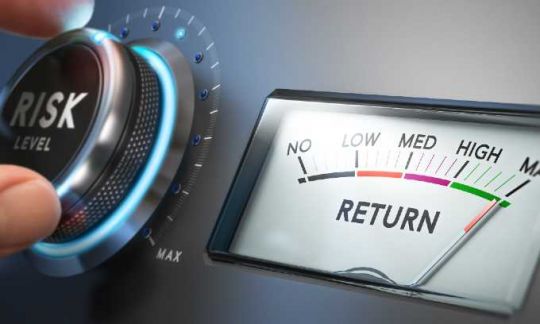What is return on investment (ROI)?

Return on investment, or ROI, provides a simple guide of how well an investment has performed – or is likely to perform – helping you choose between investments.
If you’re planning to invest money, it makes sense to get a feel for how much of a return you’re likely to make on the asset. That’s when it is handy to know the ‘return on investment’ – or more simply, ROI.
What is ROI?
ROI, or return on investment, is a financial measure of how an investment has performed, or what it is likely to deliver, over a period of time. Investors and businesses often use ROI when assessing how worthwhile a particular investment or expense will be. For example, when deciding whether to purchase an investment property or purchase a new business vehicle.
What does ROI mean?
A simple explanation of ROI is that it represents “the percentage gain or loss of any investment over time”, according to Tim Collins, Financial Adviser with Talem Wealth. Tim told Canstar that you may come across ROI results in a variety of situations. This can include the annual statements for your current investments or super fund, or in the prospectus and offer documents for new investments. Real estate listings can also mention ROI figures as these can be helpful for property investors.
Why is return on investment useful?
ROI can be handy to compare different investment options, but as Tim pointed out, ROI also offers “a quick check of how your investments are going”.
“The idea of investing is that you will make money over a long period of time,” Tim noted.
“If you had a long term investment and no need or intention of selling it, a quick ROI check would be useful to know where you are at a point in time, and check if you are on track or not.”
Tim gave the example of purchasing a rental property for $500,000 with a plan to hold onto the place for 20 years.
“If I checked the ROI in year five and it (ROI) was positive – and there were no other issues with the investment (meaning it is rented, and there are no maintenance or cost problems), I would be happy to hold the investment, “ he said.
“But if I looked at the same property and the ROI was negative after five years, I would do more detailed research into why, and what could be done to turn the situation to ensure I wasn’t losing more money over time,” Tim explained.
That said, Tim cautioned this is a simple example, and anyone investing $500,000 would be likely to research and monitor their investment on a more regular basis.
How to calculate return on investment
A simple way to calculate ROI is to use a formula that shows the profit you make expressed as a percentage of the investment’s cost. For example:
Profit ÷ investment cost
The end figure is then multiplied by 100 to give a percentage.
As a guide, let’s say Judy invests $1,000 buying shares in ABC Limited. Judy receives no dividend on the shares, and after two months she sells the shares for $1,200. This gives her a profit of $200.
Judy’s return on investment can be worked out as:
$200 ÷ $1,000 = 0.20
Multiply this by 100 to get a percentage: 0.20 x 100 = 20%.
This shows that Judy’s return on investment for her ABC Limited shares is 20%. The problem is this ROI is Judy’s ‘gross’ (before costs) return as it doesn’t take into account any expenses associated with her investment.
To find her ‘net’ (after costs) ROI, Judy needs to factor in the cost of brokerage. She paid $10 in brokerage when she purchased the shares, and a further $10 when she sold the shares. This brings the total cost of her shares (including the purchase price) to $1,020.
In this case, Judy’s net ROI can be calculated as:
$200 $1,020 = 0.196
If we multiply 0.196 by 100, we can see that Judy’s net (after costs) ROI is equal to 19.6%.
Again, this is a simplified example and doesn’t necessarily reflect all of the costs of investing in shares.
What to be aware of with ROI
ROI can have its uses but it is not the only aspect investors should consider.
“The ROI measure isn’t a specific rule so it can be deceptive,” Tim explained. “For example, a 20% ROI sounds great until you read that this was the ROI over 10 years and the annual rate of return is actually 2%.”
The ROI meaning can be further muddied when ongoing income is taken into account. Investments can pay various types of income, each of which can be treated differently for tax purposes. Using past returns to calculate ROI can also be misleading.
“Comparing investments can be difficult, particularly with simple measures like ROI as you may not have a full picture of the return profile. As with all things in the investment world, past returns are not a reliable indicator of future returns,” Tim said.
The other factor to bear in mind is that an investment with a very high ROI could also be very high risk.
Is return on investment really meaningful?
Tim believes ROI may be useful to form an initial view of an investment but isn’t the full picture.
“This measure is too simple to rely on for investment decisions. I would do more research into expected risk, return and cashflows before investing.”
If you do come across ROI mentioned in the marketing material for an investment, check to see if it is a gross (before costs) figure or the net (after costs) return. Almost all investments come with costs, and as we saw in the hypothetical example earlier, there can be a significant difference in the ROI once any expenses are taken into account.
Consider seeking financial advice if you need guidance on an investment decision.
Cover image source: Olivier Le Moal/Shutterstock.com
This article was reviewed by our Deputy Editor Sean Callery before it was updated, as part of our fact-checking process.

Try our Online Share Trading comparison tool to instantly compare Canstar expert rated options.





